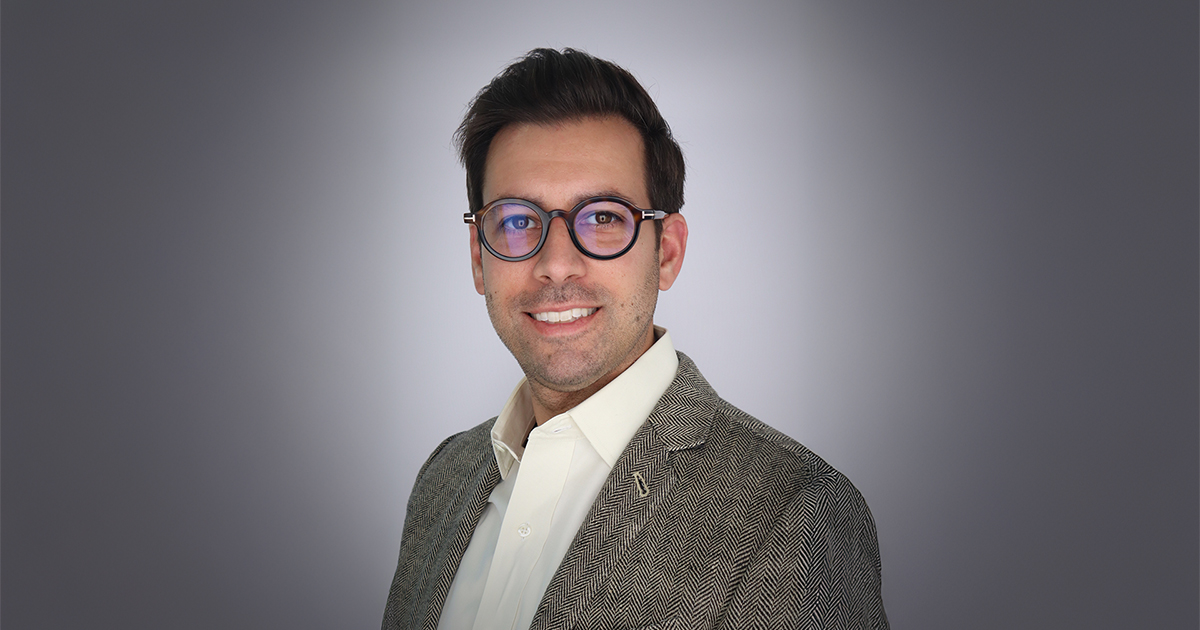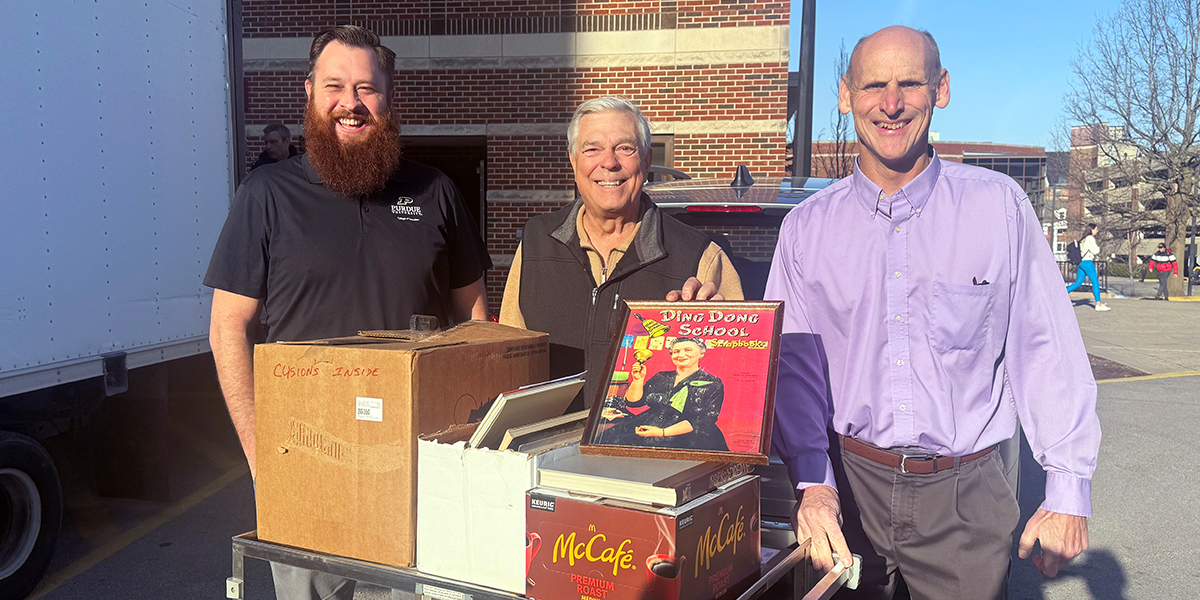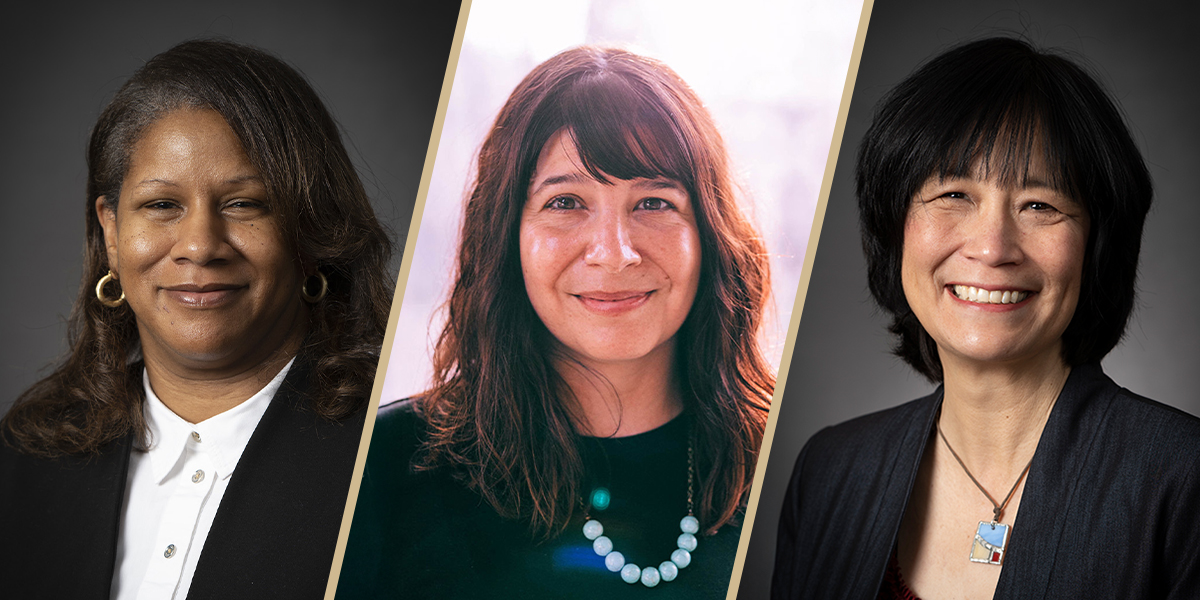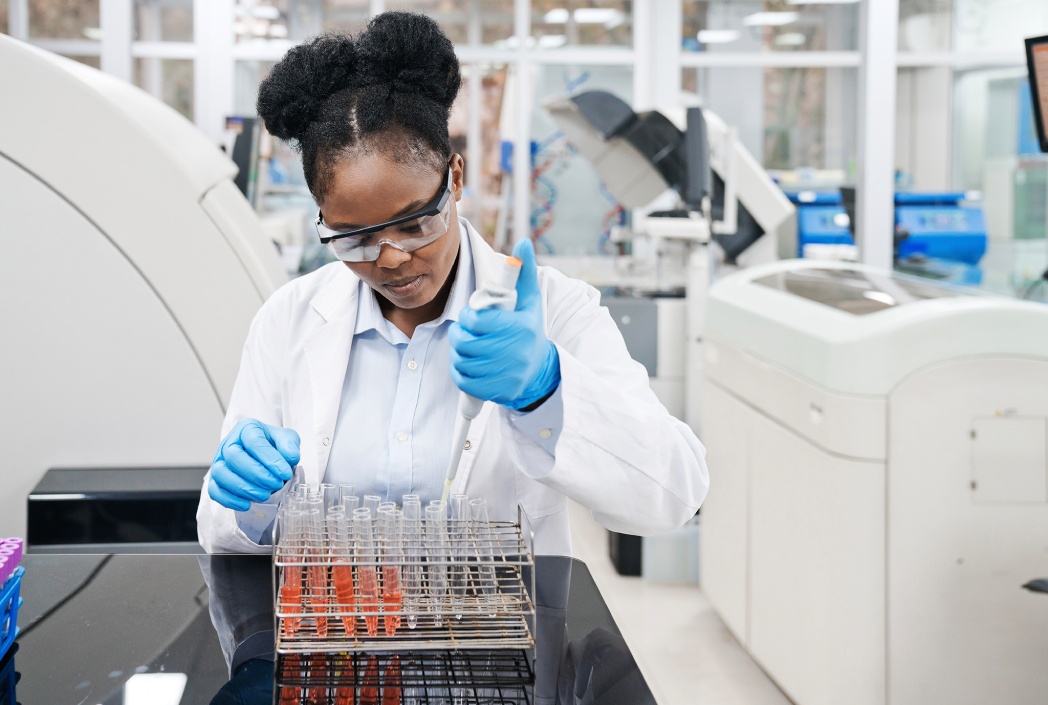A Lightning Strike: My Personal and Painful Experience
Business faculty member Marlene Weaver discusses her experience of being hit by a lightning strike and its aftermath.

As a little girl growing up in Pennsylvania, I loved to sit outside on the porch with my father, watching the lightning and listening to the thunder. We had some great storms, and I always enjoyed that time with my father. I also enjoyed listening to storms during other periods in my life, especially with my sons when they were young.
Now, I live in Florida. My new house is as hurricane-proof as possible, and it is solid inside and outside.
High winds, rain and lightning are very common here in Florida. During the hot, humid summers, we get a storm almost every day, so it is an accepted fact of daily life in Florida.
An Unexpected Hospital Visit
One hot Wednesday afternoon in June 2024, I had just returned home from picking up my sister from the airport. Some clouds were forming, but there was no rain yet.
I decided to take my little Maltipoo, Molly, out for a walk to the neighborhood park. We were heading home, and Molly was in a stroller I take on our walks for when she is tired. Then, she saw her best friend and neighbor’s dog, Tango, from next door.
I picked up Molly and placed her on the ground to allow her to frolic with Tango. I held the stroller behind me with my left hand.
My neighbor and I were chatting about nothing too important (probably about how cute the dogs were together). I was in the middle of a sentence when I was slammed down to the sidewalk unconscious.
I heard nothing, I saw nothing and I felt nothing. I suppose it was a very good thing that I was unconscious before I hit the ground because my fall would have otherwise been devastatingly painful based on my injuries.
When I came to, two neighbors were escorting me back to my house a short distance away. They commented that the thunder they heard before I awoke was the loudest thunder they had ever heard.
The neighbor who was with me (Tango’s “dad”) was still shaking. He said that he was lifted two feet in the air, and his hair stood on end.
My other neighbors struggled to get me in the house while Molly and Tango waited at the front door, shaking in fear. I was in shock and felt major pain, and I was crying.
My heart was pounding, and I felt very dizzy. I also had five very strange, quarter-sized burns on my hand – three of them were between my knuckles.
My knee was already swelling, and I could not move my neck. My forehead was bleeding and pounding from where it hit the ground.
I couldn’t move my thumb. I was not in a good place.
They wanted to call an ambulance, but I didn’t want that. The ER is only one mile away from my home, and I felt we could get there even faster with less excitement if we just went quickly.
Since my sister lives just down the street, we dropped off Molly (still shaking) at her home so Molly wouldn’t be alone. My heart was pounding so hard, and my whole body was hurting.
At the ER, they asked what happened. I said, “I don’t know, but I was struck to the ground and became unconscious.”
They kept calling it a fall. I explained, “I did not fall. I was in the middle of a sentence standing still, and then I was unconscious on the ground.”
They whisked me off for X-rays. I received X-rays of:
- My right-hand thumb (swollen and hurting)
- My left hand (burns)
- My knee (swollen and very painful)
- My head (forehead swelling and pounding)
- My spine (couldn’t move my neck)
Some time later, the doctor came in and said “Good news! Nothing is broken, and there is no head bleeding.”
The nurse and doctor kept referring to the burns on my left hand as abrasions. They certainly were not abrasions but deep burns between my knuckles. I didn’t have the energy to argue with them. I knew that abrasions would not look like that.
My external injuries were the least of my problems. They checked my vitals; my heart rate was far too fast (199), and I was experiencing atrial fibrillation (AFib).
I experienced bad dizzy spells that were nothing like I ever felt before. The healthcare providers scurried around to get my IV hooked up so they could inject medication and reduce my heart rate.
After a time, my heart rate slowed down to 120 which they said was okay for the time being. The healthcare providers told me that I would be admitted to the hospital for observation and that I would have to go by ambulance because the hospital was 10 miles away.
Making the trip was excruciating. I refused the heavy painkillers because they make me sick. The last thing I wanted was to have to vomit on top of everything else, so I accepted a few Tylenols and left it at that.
I arrived at the hospital and was in my room by midnight. I wanted to kiss someone because my room was a single and I didn’t have to share, so I could cry in private.
People were in and out of my hospital room all night long looking at my monitors and asking questions. I really wanted some sleep but didn’t get any.
I settled for an in-between painkiller that was a bit better than Tylenol but not as potent as Oxycodone. It helped to reduce the intense pain a little.
The next day in the hospital my knee was still swelling badly, and the pain was awful. They decided to do a CT to look further, and sure enough, my kneecap was fractured.
The healthcare providers also wanted to know more about my neck issues, so they did a magnetic resource imaging (MRI) test. According to the neurologist who saw me in the hospital, the MRI showed several badly herniated discs.
They also did a computed tomography (CT) of my head to ensure that no bleeding had occurred. Sure enough, there was a large hematoma (a closed but bleeding wound) behind my forehead. The hospital staff explained that the blood would drain downward, and I would most likely have a couple of black eyes from it. That was an understatement!
I also saw other physicians. First, there was the cardiologist who mentioned a few things to do to get my heart back to normal. I barely understood what he was saying, but I did catch that he wanted to see me in his office seven days later.
Next came the neurosurgeon. He reviewed the images of my neck and asked when I wanted to schedule surgery to replace the discs. That topic was not exactly what I wanted to talk about right then, so I put him on hold and asked for someone to give me a shot or do something else to relieve my neck pain.
I suggested that maybe therapy would help? They set me up for an office visit to talk about it. YAY.
The doc that I needed most was the orthopedic doctor. My knee was so painful, and I couldn’t walk.
He arrived on Sunday morning with a brace for my knee and told me that my kneecap was fractured. I was lucky because the fracture was vertical instead of horizontal, and I wouldn’t need surgery.
I guess they missed the fracture in the ER. He said it would heal on its own. YAY again.
I still couldn’t walk. He told me to leave the brace on permanently until he saw me in a week. However, the brace wouldn’t stay up when I moved around using a walker. That was fun.
Soon after he left, the head nurse came in and explained that all three doctors signed off on my release, so I could go home. I was very happy.
Recovering from the Lightning Strike at Home
My son happened to be with me at the time and so he just stayed until they got all the paperwork done and took me home. My heart rate was still over 100, my knee felt horrible, and my neck pain was excruciating. By this time, half of my face was black and blue from the hematoma.
I looked pretty beat up for sure. However, I was very happy to be alive and out of that hospital bed.
The first week home was very scary. I was still taking muscle relaxers and a light pain medication. Every time I got up, I had to hold on to something because I was so off balance and dizzy.
I thought that I was going to drop at any moment, and I made the decision to just stop the meds completely to see if that was the problem. I just took the Tylenol from that point forward. I am sure the high heart rate and the AFib also contributed to the dizziness and imbalance.
One week later, my neighbor came by to see me. I was on the sofa with my leg propped up, lying against a pillow.
I started to feel better, and I said, “I feel like the A-Fib just cleared up!” I took my pulse (60) and blood pressure (120/70). Just like that, my heart had returned to its normal rhythms. Super YAY.
A few days after I was home, I was out front and saw my other neighbors from next door. He told me that his house was hit badly that day. All their electronics were blown out, and there was a hole in their roof.
In hindsight, the lightning hit their home, and the high-voltage electrical current traveled underground to meet the metal stroller that I was holding. I wish I had known that fact a week earlier.
Sleeping was not a treat. Most nights I tried to sleep on a recliner chair because lying in bed was so painful for my neck. Rolling over would bring tears.
I finally decided to take the nerve block medication only at night. It helped so much, and I finally slept for five hours straight without pain.
But the medication had side effects that I didn’t like much, such as positional vertigo. I stopped taking it within a few weeks.
Six weeks later, my cardiologist ruled me a miracle. After seeing me twice and performing an echocardiogram, he released me for business as usual.
My orthopedic doctor said my knee was healing nicely, and the remaining pain would subside within the next six weeks.
The five burns on my hand healed, and I see the scars as a reminder. I can’t say that I see “the end in sight,” however. Deep down, I don’t feel that I will ever be 100% again.
The neck pain caused headaches, and even my hair hurt. I couldn’t lie down with a pillow under my head because it hurt. I went to physical therapy, but it was so painful that I quit it.
Four months after the incident, the pain in my neck was still problematic, and I decided to see a different neurologist to see what I could do. I took my neck scans from the June ER visit.
The doctor reviewed them and asked, “Did they tell you in the ER or hospital that you had a fractured neck in two places?” I replied, “No. They told me I had three herniated discs.”
The neurologist said that my C1 vertebrae was fractured in two places and that I should have worn a neck brace for three months. He also noted that the scans from June showed a displaced vertebrae that was probably the source of my pain.
He sent me for updated scans to see the condition of the fractures. The results showed that they had healed about 50%, but the healing was crooked rather than straight.
However, the neurologist did not think that was the cause of my pain. He thought the displacement was the culprit. He offered a choice of pain management, physical therapy or surgery.
I didn’t want to take more pain pills, and the physical therapy was so painful that I didn’t want to repeat the experience. In addition, the therapy would not correct the vertebra displacement.
As a result, we scheduled a surgery to replace a disc (C4-5) and correct the displacement with a plate and screws.
The surgery is now behind me, and I will see that doctor one more time to get released. I am very happy so far with the results of that surgery and feel this doctor had it all right.
I hope that maybe the end of my pain is in sight. My headaches are gone, and I can move my neck without pain (for the most part).
Dealing with the Aftermath
There are still some people who question if I was really zapped by lightning because they find it difficult to believe. That’s okay; they can think I am crazy or just old or that I slammed myself to the ground, but I know the truth.
I am grateful that I’m still here to walk my dog and love my family. I can hug my grandson, eat good food with my friends and tell my story.
Tips to Protect Yourself from a Lightning Strike
During my recovery, I researched lightning at the National Weather Service website. I’ve also read the stories of other people who were struck.
Please take thunder and lightning very seriously and don’t underestimate the damage lightning can do. I would not wish my experience on anyone.
The National Weather Service website says that there are five ways that someone can be affected by lightning. They include:
- A direct strike (most uncommon)
- Ground current (very common)
- Streamers
- Conduction
- Side flash
One common myth is that most people say, “Lightning never strikes the same place twice!” Wrong. Lightning strikes wherever it wants, whenever it wants, and as many times as it wants.
Lightning is one of the least understood weather phenomena. The NWS notes that lightning is five times hotter than the surface of the sun (50,000 degrees Fahrenheit). Immediately after a lightning flash, the air cools and contracts quickly. The rapid expansion and contraction of that air creates the sound we hear as thunder.
If you hear thunder immediately after a lightning strike, it is VERY close. Take cover immediately.
The NWS says that lightning strikes the United States about 25 million times a year. Although most lightning occurs in the summer, people can be struck at any time of year. There are about 20 fatalities in the U.S. every year and hundreds of people are severely injured.
So whether you’re indoors or outdoors when a storm is near, please take the appropriate precautions to protect yourself from lightning-related injuries.
What's Your Reaction?



























